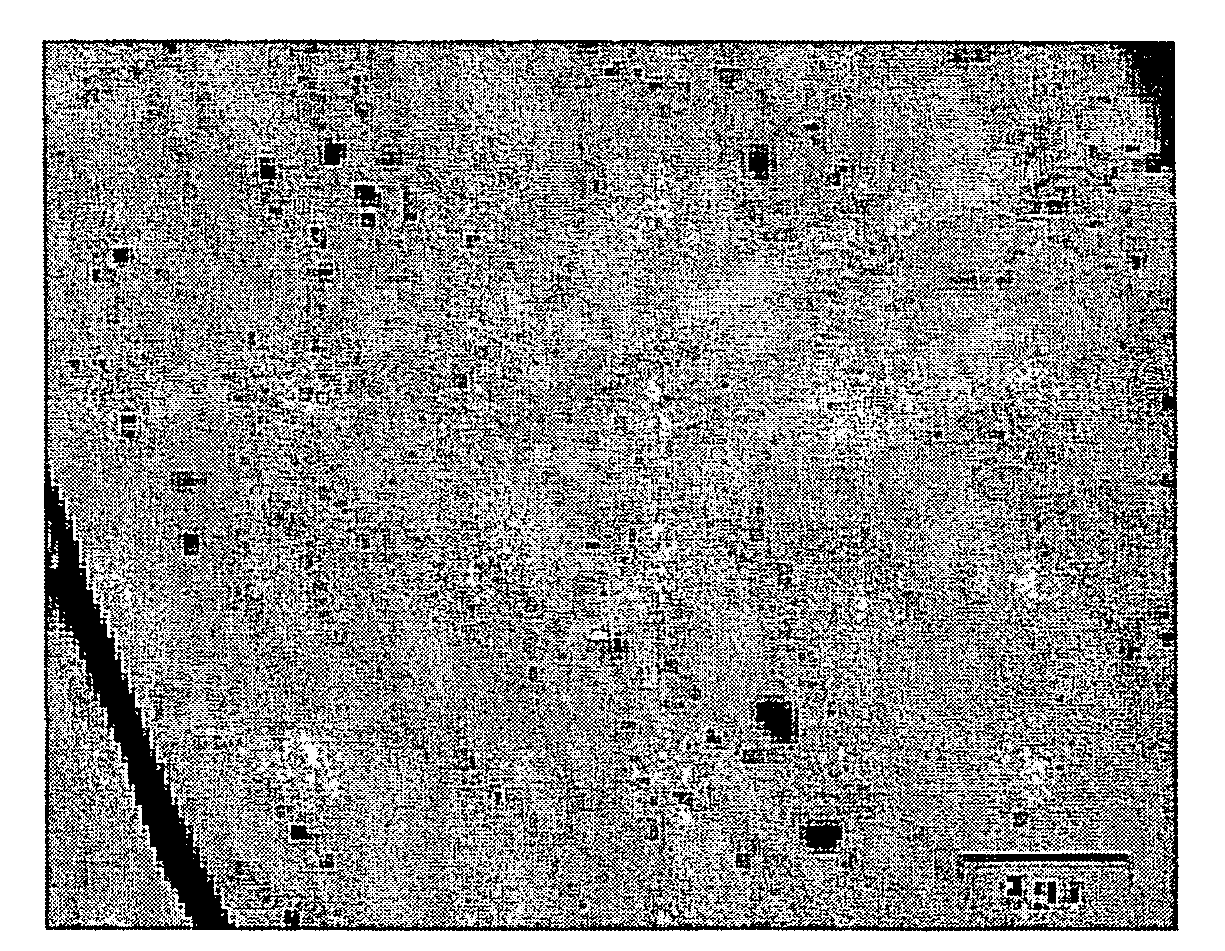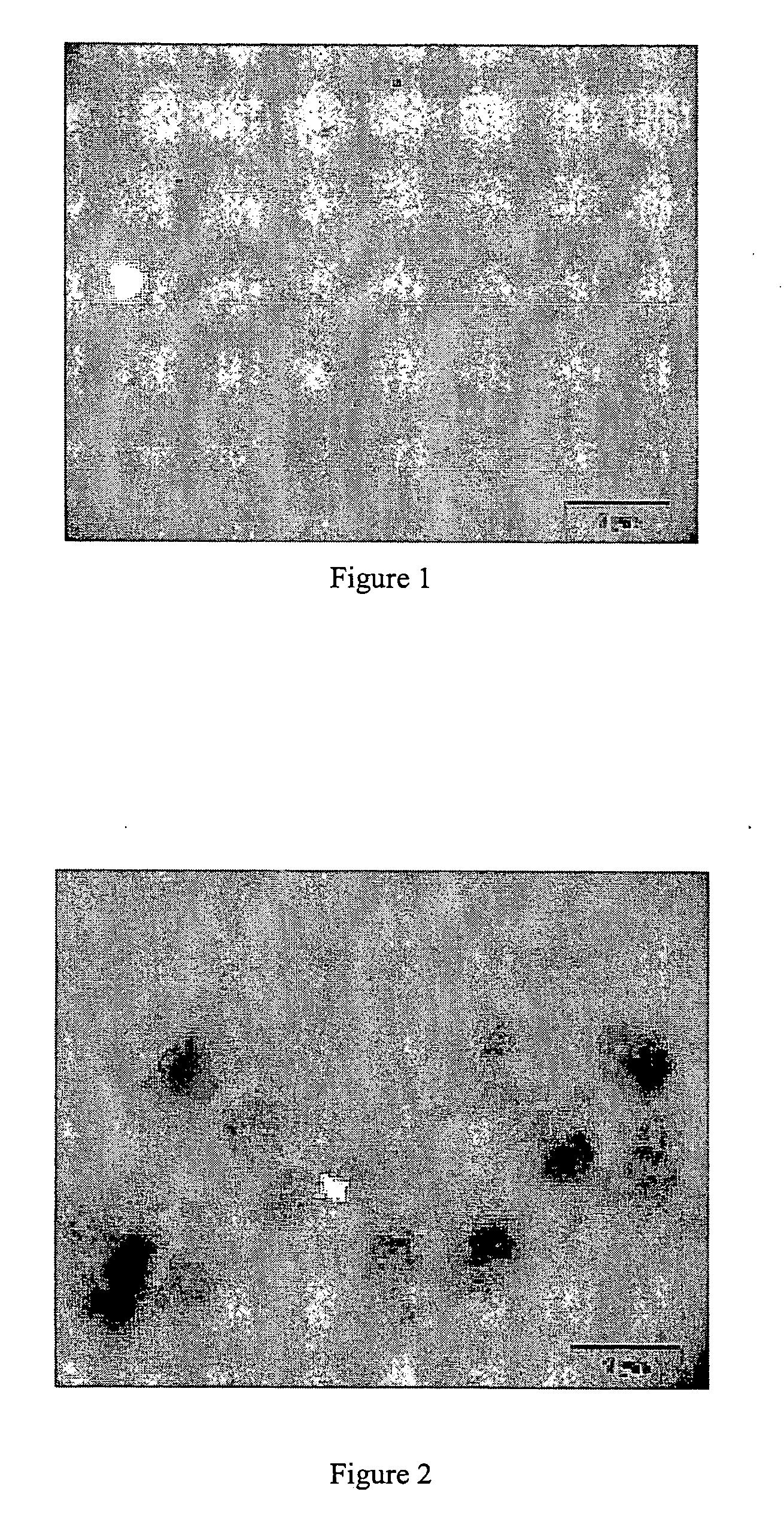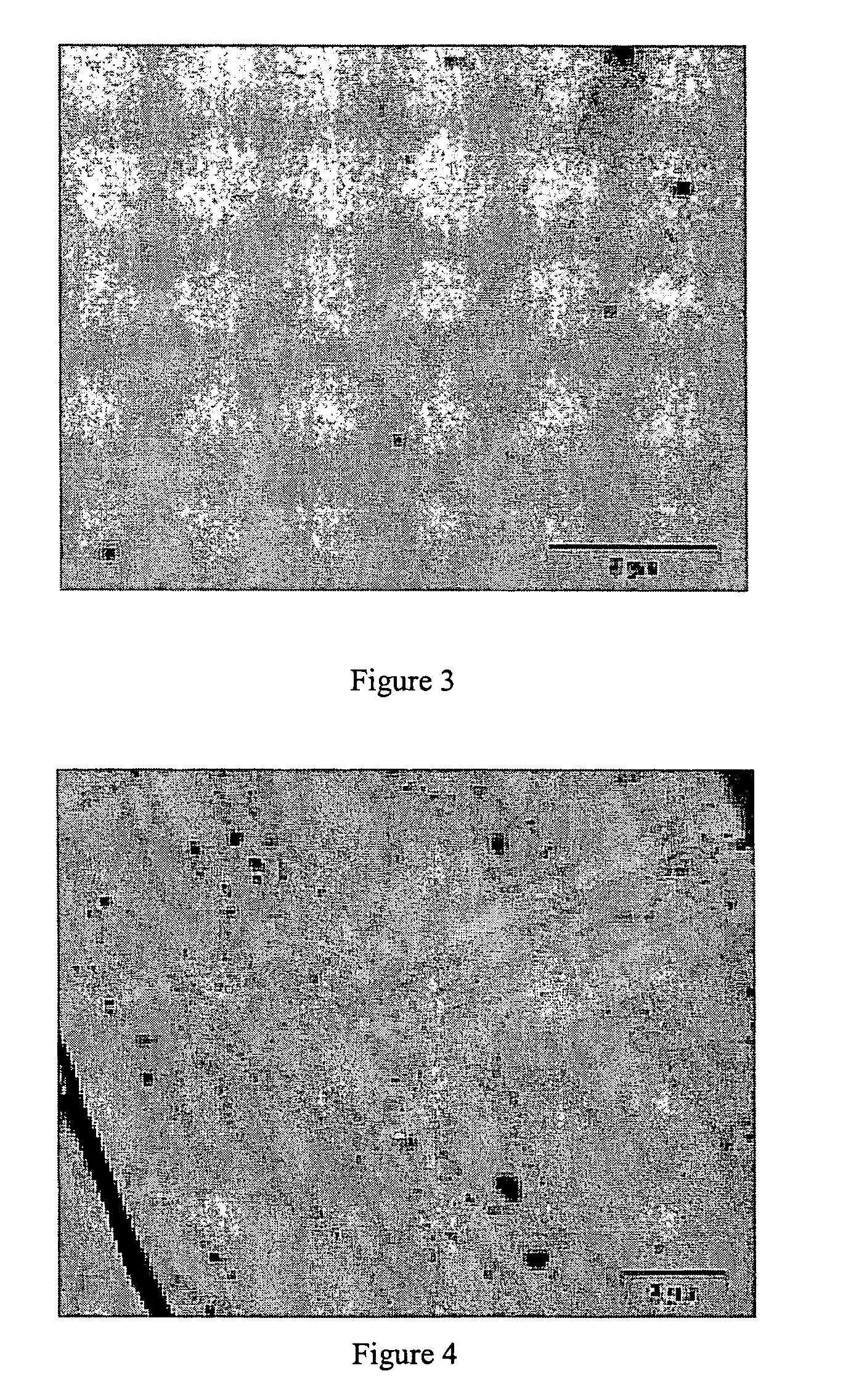RFL film or adhesive dip coating comprising carbon nanotubes and yarn comprising such a coating
a technology of carbon nanotubes and adhesive dip coatings, which is applied in the direction of pretreatment surfaces, special surfaces, yarns, etc., can solve the problems of yarn and rubber material sliding phenomena, shear stress between yarn and rubber material, etc., and achieves the effect of improving the breaking force and higher the for
- Summary
- Abstract
- Description
- Claims
- Application Information
AI Technical Summary
Benefits of technology
Problems solved by technology
Method used
Image
Examples
example 1
Preparation of the RFL Bath
[0081]The formulation comprises two mixtures (A and B), which are combined very slowly and left to mature for about 48 hours at room temperature.
[0082]Mixture A conventionally contains deionized water (126 liters), a resin such as that sold under the reference Phenolite TD 2241 by the company Dainippon Ink (22.5 kg), 30.5% formaldehyde of the brand Univar (7.1 liters) and 30% sodium hydroxide (800 ml); the whole is stirred for 10 minutes at 60 rpm at room temperature.
[0083]Mixture B contains Pliocord VP 106 latex sold by the company Eliochem (400 kg), 20.5% aqueous ammonia (31 liters) and Pliocord SB 2108 latex sold by the company Eliochem (200 kg), the whole being prestirred at 35 rpm at a temperature of between 20 and 30° C.
[0084]Finally, a wax is added to the mixture A+B, such as the wax sold under the reference S-Wax by the company Sasada Chemical Industries (31.5 kg). Deionized water may again be added to adjust the concentration.
[0085]Preparation of ...
example 2
[0093]The RFL chosen is different than that in the preceding example. The mixture consists of 3 preparations that are combined dropwise:[0094]preparation A contains deionized water (61 g), 20.5% aqueous ammonia (7 g), 41% urea sold by the company Verre Labo Mula (45.5 g) and resin sold under the reference Penacolite by the company Indspec Chemical Corp. (17 g);[0095]preparation B contains Zetpol-B latex (HNBR) sold by the company Nippon Zeon (480 g) and deionized water (52 g). Preparation A is introduced into preparation B;[0096]finally, preparation C is added, containing deionized water (27 g) and 30% formaldehyde from the company Univar (6.7 g). The whole is left to mature at 20° C. for 12 hours.
[0097]The proportions used are the same as previously, i.e. 2% of nanotubes on a dry weight basis relative to the RFL.
[0098]The mechanical results obtained in static traction (same conditions as Example 1) are as follows, as regards the breaking forces of the films.
Test temperature:Test te...
examples 3 to 5
[0100]According to the same procedures as those described in Examples 1 and 2, RFLs according to the invention were produced with the characteristics given in the following table:
Nature ofNature ofRF / LExamplesthe resinthe latexratio3PenacoliteZetpol B 7.4%.4PhenoliteMIXTURE VP, 7.8%.TD2241SBR5PhenoliteCSM 45019.5%TD2241*NB. The percentages are given relative to the solids
[0101]In each of these formulations, a dispersion of nanotubes in proportions of 2% of nanotubes as solids relative to the RFL was added.
[0102]It emerges from the foregoing text that the reinforcing elements in accordance with the invention have the advantage of appreciably increasing the mechanical properties of the adhesion film (in flexure, shear and compression), which can improve the service life of composite articles in which they are incorporated. Specifically, in the long term, there is less degradation of the mechanical properties than with films of the prior art.
[0103]Similarly, the use of nanotubes makes ...
PUM
| Property | Measurement | Unit |
|---|---|---|
| diameter | aaaaa | aaaaa |
| diameter | aaaaa | aaaaa |
| diameter | aaaaa | aaaaa |
Abstract
Description
Claims
Application Information
 Login to View More
Login to View More - R&D
- Intellectual Property
- Life Sciences
- Materials
- Tech Scout
- Unparalleled Data Quality
- Higher Quality Content
- 60% Fewer Hallucinations
Browse by: Latest US Patents, China's latest patents, Technical Efficacy Thesaurus, Application Domain, Technology Topic, Popular Technical Reports.
© 2025 PatSnap. All rights reserved.Legal|Privacy policy|Modern Slavery Act Transparency Statement|Sitemap|About US| Contact US: help@patsnap.com



